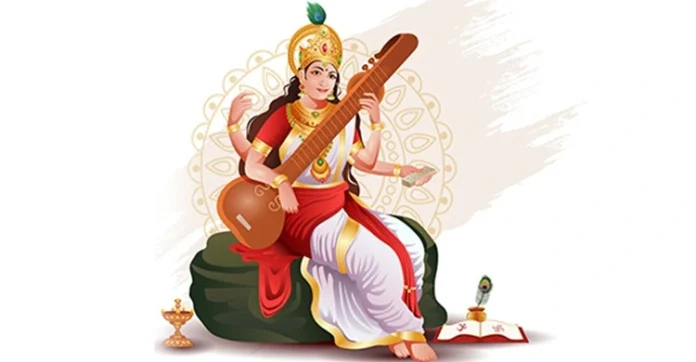Among several festivals that flourish India and its rich culture, one of the most important ones is the Vasant Panchami or and Saraswati Puja in honour of the Hindu goddess Saraswati, is a festival that marks the preparation for the arrival of spring.
While Vasant Panchami holds a special place in India, its vibrant spirit transcends borders, igniting festivities in various corners of the globe. Let’s look at how different communities embrace this ode to spring and knowledge:
Nepal: Basant Panchami, Saraswati Puja, and Kite Tales
Nepal echoes the essence of Vasant Panchami with “Basant Panchami” and “Saraswati Puja.” Schools and homes transform into yellow havens, adorned with marigolds and mango leaves. Devotees offer prayers to Saraswati, seeking blessings for wisdom and eloquence.
Students and professionals all worship their tools and books, making this day a worship of knowledge, art and education. The skies become vibrant canvases as families engage in a playful battle of kites, their laughter echoing with the joy of spring’s arrival.
The people of Nepal believe that Basant Panchami is one of the most auspicious dates for beginning a newly married life. Children between the ages of 5 to 7 are made to utter their first alphabet on the auspicious Basant Panchami day.
Indonesia: Saraswati Puja, a Symbol of Harmony
Though not a national holiday, Vasant Panchami finds resonance in Indonesia, especially among the Hindu community. Known as “Saraswati Puja,” the day witnesses prayers and offerings to the goddess of knowledge. Families gather for a delicious vegetarian feast featuring yellow-hued delicacies like yellow rice and sweets, symbolising prosperity and knowledge.
Also Read: Animals and Associated Gods In Indian Mythology
Bali: Saraswati Puja, Embracing the Arts
On the “Hari Raya Saraswati” in Bali, communities gather to celebrate Saraswati, the goddess of arts and music. Traditional Balinese dances and music fill the air, showcasing the rich cultural heritage. Offerings of yellow fruits, flowers, and incense are made to Saraswati, seeking her blessings for creative pursuits.
India: A Tapestry of Traditions
Back in India, Vasant Panchami unfolds in a diverse tapestry of traditions. In Bengal, “Saraswati Puja” dominates, with elaborate rituals and vibrant pandals adorning streets. Punjab echoes with laughter as families compete in kite-flying competitions, marking the festival as “Basant.” In the south, “Vasanta Panchami” sees offerings made to Goddess Saraswati and prayers for bountiful harvests.
The day begins with a ritualistic bath, followed by prayers and offerings to deities. Homes are adorned with mango leaves and vibrant flowers, reflecting new beginnings.
Families gather for a delicious feast featuring yellow delicacies like kheer and ladoos. Children enjoy flying kites, their laughter echoing in the clear spring air. Parents sit with their babies and children and encourage them to write their first words or create music together on this day.
The temples of Saraswati are filled with delicacies a day before Vasant Panchami, so the Goddess can join the celebrants in their feasting on the day of the festival.
Also Read: Significance of Sun (According to Science, Spirituality, and Religions)
One Spirit, Many Expressions:
Though the names, rituals, and foods vary, the essence of Vasant Panchami remains constant – a celebration of spring, knowledge, and new beginnings.
Whether under the kites of Nepal, amidst the music of Bali, or during the pujas of India, we see communities united by shared values and a deep connection to nature’s cyclical beauty. Vasant Panchami, reminds us that despite geographical borders, we share a common thread – the joy of spring and the pursuit of knowledge, weaving us together into a vibrant tapestry of humanity.
Read more blogs:





